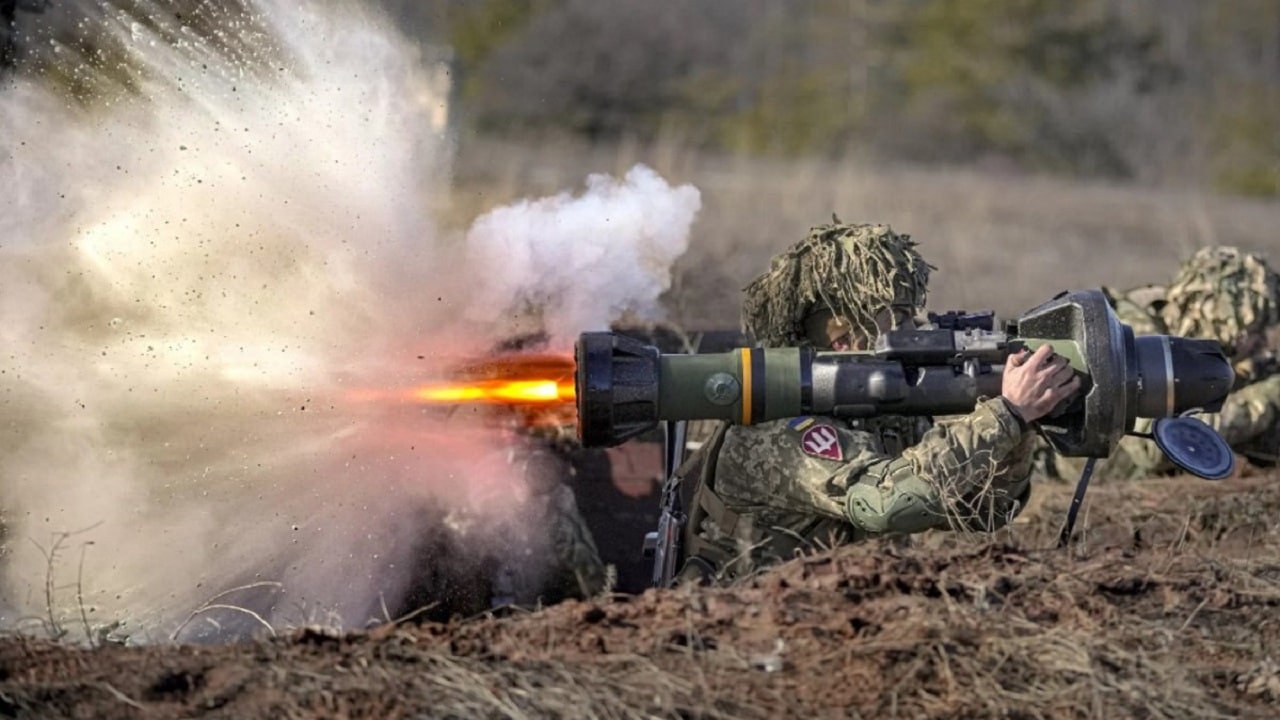There is a lot of debate in the defense community on which missile platform is best for killing Russian tanks in Ukraine. Some argue the Javelin anti-tank missile system is better. While others favor the NLAW platform. One thing is clear: Moscow wishes both did not exist: Following a visit by President Joe Biden to its facility in Alabama recently, Lockheed Martin Corp announced that it has plans to nearly double production of the Javelin missile. This anti-tank weapon has aided Ukraine in its fight against Russia. The defense contractor said it will boost output to 4,000 units per year, up from the 2,100 that are currently produced yearly.
The increase will take a couple of years, however. It will be crucial to replenish supplies of the weapons, as the United States has seen its stockpiles depleted.
The FGM-148 Javelin Advanced Anti-Tank Weapon System-Medium (AAWS-M) is considered to be among the world’s best shoulder-fired anti-tank weapons. It is currently operated by a dozen nations. Each missile weighs 11.8kg while its command launch unit (CLU) and round weigh 6.5kg and 15.9kg respectively.
The man-portable launcher fires a 127mm (5-inch) round that is equipped with an 8.4kg (19 pounds) tandem-charge HEAT (high-explosive anti-tank) warhead. It is equipped with optical sight and thermal imaging.
The Javelin is actually not the only anti-tank weapon employed by the Ukrainian military. In fact, the joint British-Swedish developed Next Generation Light Anti-tank Weapon (NLAW) – also known as the MBT LAW or RB 57 – has been even more widely deployed.
It is guided by predicted line-of-sight (PLOS), and can be used to carry out an overfly top attack (OTA) on an armored vehicle or a direct attack (DA) on structures and non-armored vehicles.
The NLAW is considered to be excellent at close range, from 20 to 600 meters, and is ideal in combat actions in urban areas, including cities and villages, as its soft-launch system means that the missile is ejected non-explosively, and can be used by infantry from within an enclosed space.
Weighing just 27.5 pounds, it is easy to fire, and light enough that the operator can still carry an additional weapon such as a rifle. NLAW can be used in an attack from almost any position, from up high in a building to behind a tree or even in a ditch/trench.
Operators can fire down 45 degrees and can shoot from inside a building, from a basement, or from the second floor of a building out of the range of most tanks.
The Javelin, with an effective range of 1 to 2.5 kilometers or about 1.5 miles, is ideal in an open field. It is also a fire-and-forget platform that utilizes automatic infrared guidance that allows the user to take cover and avoid counter-fire immediately after launch.
As it is a passive weapon and produces little backblast, tank crews are largely unable to detect a Javelin in the area until it’s fired.
The NLAW is also a smaller weapon, which again makes it ideal for the urban fighter, but the most significant consideration could be the platform’s respective costs. Each Javelin system costs around $178,000, while replacement missiles cost an additional $78,000 – while the unit cost of the NLAW is around $40,000.
But the ability of a single operator to destroy an enemy tank with either platform: priceless.
Now a Senior Editor for 1945, Peter Suciu is a Michigan-based writer who has contributed to more than four dozen magazines, newspapers and websites. He regularly writes about military hardware, and is the author of several books on military headgear including A Gallery of Military Headdress, which is available on Amazon.com. Peter is also a Contributing Writer for Forbes.

